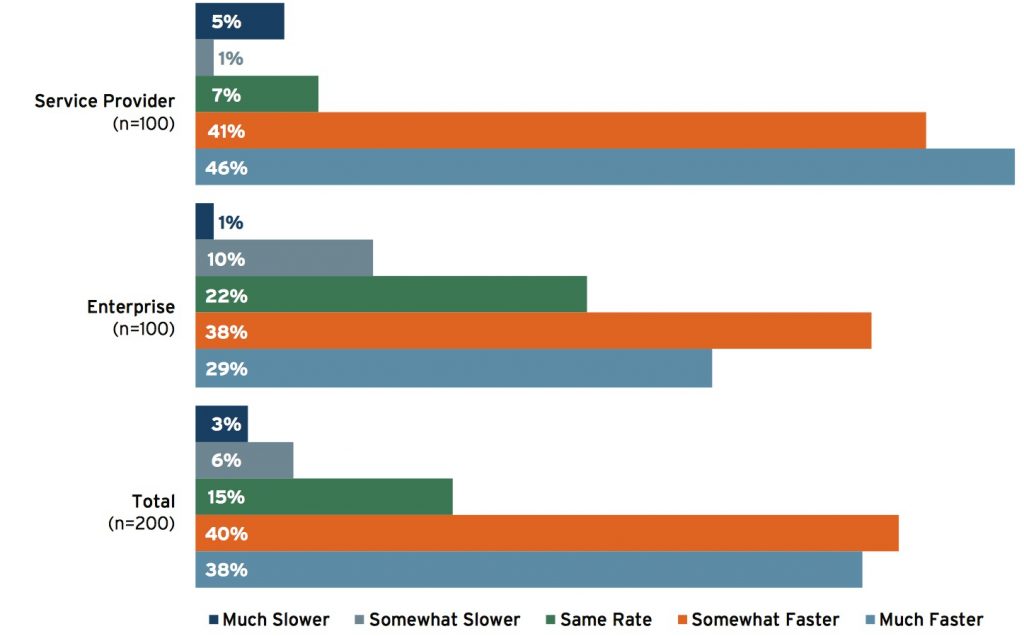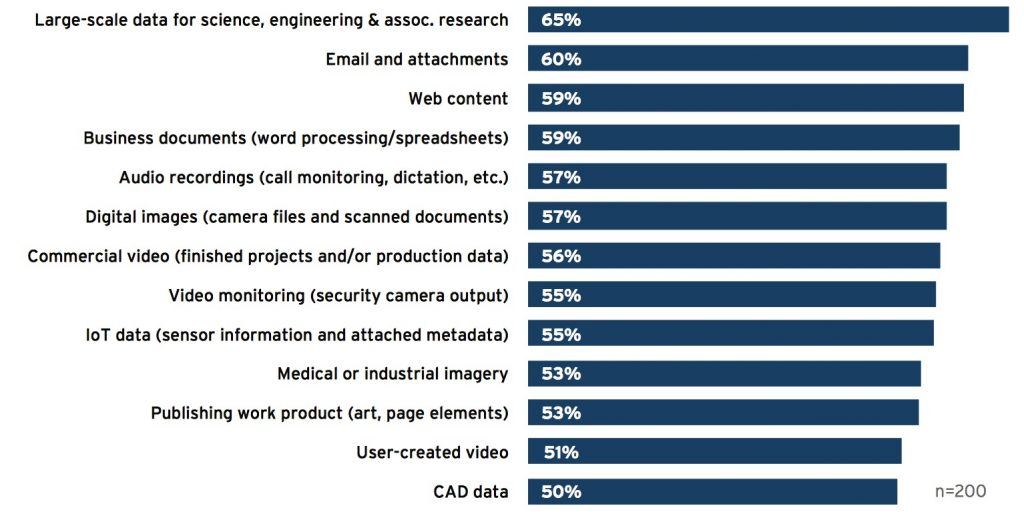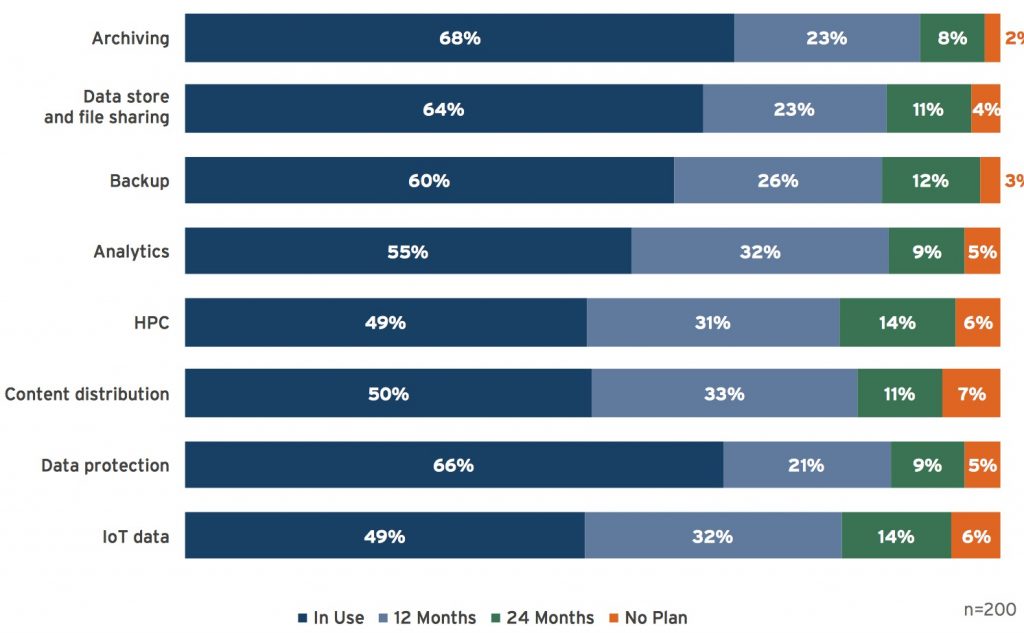Within 2 Years, Object Storage to Reach 90% Penetration Among Respondents – Western Digital/451 Research
For key big data use cases - even for newer use cases like IoT and analytics
This is a Press Release edited by StorageNewsletter.com on December 15, 2017 at 2:53 pmWestern Digital Corporation announced the results of its first annual The Growing Role of Object Storage in Solving Unstructured Data Challenges survey conducted in collaboration with 451 Research LLC.
Two hundred enterprise and service provider decision makers and influencers participated in the September 2017 survey, providing insights into their unstructured storage requirements, and their interest in adopting object storage.
The survey validated the ongoing explosion of unstructured data, with 63% of enterprises and service providers reporting that their storage capacities are at 50PB or more, of which, more than half is unstructured data. Most service provider respondents reported growth rates in the 60 to 80% range, while enterprise customers hovered more toward 40 to 50% annual growth.
Next-generation applications that are driving the adoption of new unstructured storage technologies, like object storage, include analytics and IoT, as well as traditional applications, such as web and email that are outgrowing their traditional infrastructures. Increased use of rich media, instead of text data, including audio, video and non-text research and engineering data, are also primary drivers for this data growth.
“The rapid growth of unstructured data driven by new applications, workloads and rich-media data streams, combined with data center transformations to hybrid cloud, software-defined and converged architectures, are unraveling traditional storage markets,” said Phil Bullinger, SVP and GM, data center systems business unit, Western Digital. “Whether focusing on big data or Fast Data, enterprises are increasingly competing on their ability to efficiently harness and create value from relentlessly increasing volumes of data. Object storage is a foundational architecture for creating the right environments to capture, preserve, access and transform data.”
Key findings in the 2017 survey include:
- Within 24 months, object storage will grow to reach 90% penetration amongst respondents for key big data use cases – even for newer use cases like IoT and analytics.
- The biggest technical driver causing organizations to shift from block and file storage to object storage is the need to support new cloud workloads and applications being written for cloud native environments and APIs. Reducing cost for large scale storage is a close second, especially for enterprises.
- The top business drivers for object storage include: 1) protecting valuable data; 2) making data accessible; 3) cost; and 4) identifying new revenue opportunities. Focusing in on why protecting valuable data is the top business driver, survey responses identified the root cause as weak and inconsistent data retention policies.
- Respondents who already had object storage deployed, identified that metadata is an important benefit of object storage and want help with developing metadata frameworks.
- Relative unstructured data growth
Q. How fast would you say your unstructured data is growing
when compared to other business data?

Unstructured data makeup
Q. What is the makeup of your unstructured data environment at present?
(Please use a 0-10 scale where 0 is ‘Minor’ and 10 is ‘Major’. Select N/A if you don’t capture this data type.)

Object storage use cases and timelines
Q. Please select your planned or anticipated use cases
and potential timeline for object storage adoption:

“These results point to object storage as the foundation for future data architectures that address untructured data, replacing block and file storage systems, and addressing the challenges of big data and analytics,” said Joan Wrabetz, VP marketing and product management, data center systems business unit, Western Digital. “Whether data is processed in the cloud or on-premises, new applications are already being designed for an object storage paradigm because it provides the right environment for that data to thrive.”
“Regardless of source, the challenge of managing unstructured data today lies in our limited ability to identify the contents of an unstructured data file without actually opening it,” said Steven Hill, senior analyst of storage technologies, 451 Research. “In object storage, the contents of user-facing metadata is customizable, which adds an incredible degree of flexibility in the identification and management of stored data. However, along with that flexibility comes the challenge of defining a metadata framework that best addresses a customer’s business needs over the long term. The survey results showed that customers of all sizes were looking for guidance in defining their long-term metadata needs.”
Complimentary copy of the survey report (registration required).
Read also:
Pricing Pressures on Object Storage – 451 Research
But margins still healthy for providers
2017.05.01 | Press Release













 Subscribe to our free daily newsletter
Subscribe to our free daily newsletter

